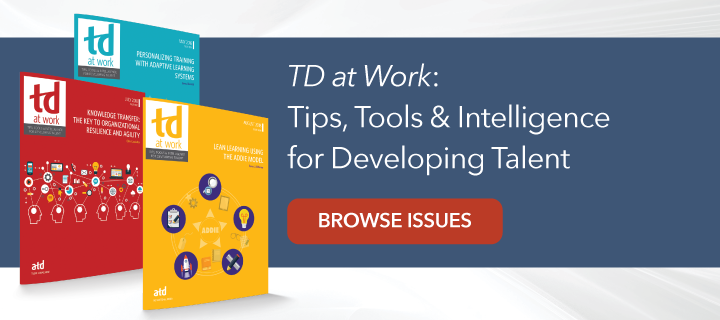“Why is customer service so important?” posed a Salesforce post. Answering its own question, the article continues: “It can be the difference between a hot IPO and just keeping the lights on. Providing great customer service can generate more marketing and sales opportunities. So meeting your customers’ satisfaction is paramount to keeping your business growing successfully.” That makes a solid business case for effective customer service training, to my way of thinking.
What might that training look like? In “Train Customer Service Reps for Success,” Rachel Armstrong, APTD, urges learning and development professionals to design a comprehensive program.
Needs Assessment
A comprehensive customer rep training program, one that trains reps on how to be knowledgeable and friendly, begins with a needs assessment. “Start by reviewing your company’s customer satisfaction survey results. To see what meets or exceeds a customer’s expectations, look at the high-scoring results, and read over the comments to see what customers wrote,” she writes. Compare how the midrange and low scores compare to the high scores. What are the differences in how a customer rep treats a customer or prospective customer?You’ll get a greater sense of that difference by observing customer reps as they work. By watching high performers, you’ll get better understanding of what they do and how you can train new reps to behave similarly. You’ll also want to interview various individuals: top performers, average performers, customer service rep managers, and quality assurance team members, for example. What training was effective for top performers? What developmental aspects were missing for those average performers?
What Skills?
Today’s customer reps must be skilled with the technical aspects of their job as well as the social aspects.The technical aspects include having expertise with the phone and computer systems to manage the multiple manners in which customers are reaching out for answers: phone, email, chat, and perhaps video chat. It includes as well as a keen understanding of your company’s products and services. With the wealth of information that customers can find online, it’s even more critical for reps to have an in-depth knowledge of these products and services as the questions are more likely to be ones that aren’t easily answered via a quick electronic search. Yet another facet of technical skills are the company’s policies and procedures. “What are the steps for giving customers discounts?” for example. Or, “What happens when a customer is late in paying their bill and asks for an extension?”
The plentitude of information that can be found online also relates to the need for reps to have strong social skills. By the time customers contact service reps, the customer may be frustrated in not being able to find the answer. The customer rep must have active listening skills, patience, empathy, a friendly tone, and an ability to effectively communicate. “The best way to turn that interaction into a positive experience is for the rep to first show empathy,” writes Armstrong. “That means not only expressing it in words but also through action. Along with a friendly tone, empathy is a fundamental way for reps to quickly calm an upset or angry customer.”
Blended Learning Approach
Different training and development methods work for different skill sets. A comprehensive training program features a number of modalities. Consider some of these training methods and their associated skill or knowledge.- E-learning. This approach may be used to explain and demonstrate to the trainee how to use a computer system or a company’s product offerings. Alternatively, e-learning may be an appropriate approach to demonstrate the importance of proper soft skills.
- Audio recordings. Rep trainees can learn about the types of questions reps in your organization often receive. New reps also can hear what good customer service sounds like: What is the tone of voice of the service rep? What words does the rep use to show empathy?
- Job aids and support tools. A job aid may instruct on how to navigate a knowledge base of products and services. Another support aid may provide scripts for reps to use with customers or potential customers.
- Job shadowing. Trainees can learn from seasoned reps how to follow appropriate company protocols. Trainees also can learn how high performers manage challenging customer interactions—whether an angry customer or an instance where there is a language barrier.
Training Isn’t the End
A trained rep isn’t going to be a high performer the day after training is completed. The rep will need continued guidance from their manager and a coach or mentor. What specific help can be determined by measuring the rep’s performance. How quickly is the rep resolving customer questions? How is the customer responding to the rep?Finally, the customer rep will need refresher training and information as procedures change or products and services are updated.




